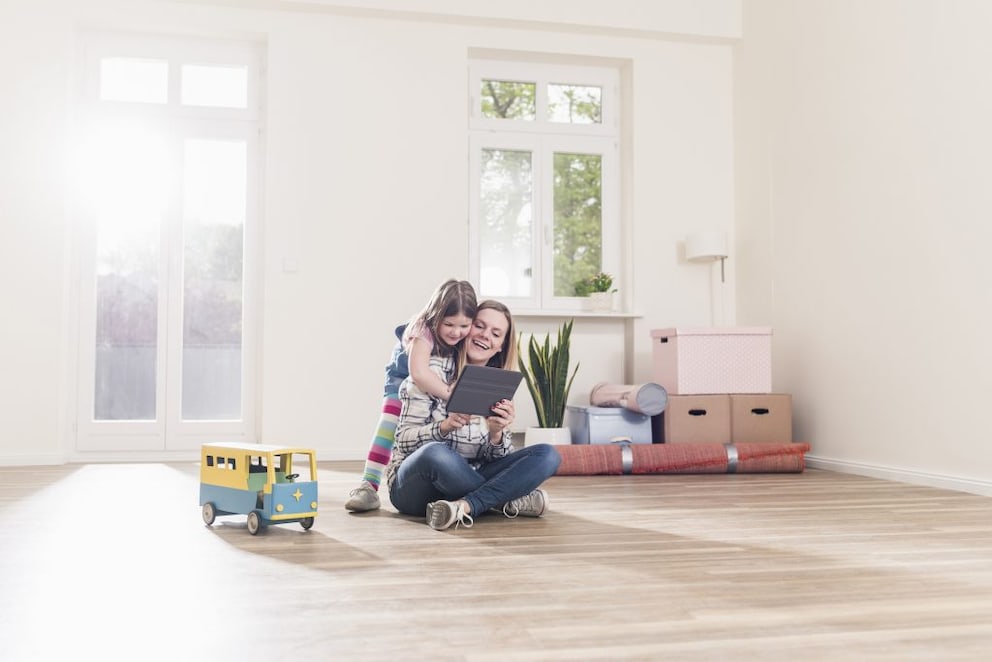July 7, 2025, 10:55 am | Read time: 5 minutes
Focusing more on the needs of the child in parenting has been popular among parents for quite some time. The Montessori educational principle is just one of many concepts that can even be applied to the design of a child’s room.
“Help me do it myself” is the core idea of Montessori education, aiming to promote a child’s self-determination, individuality, and independence. Parents need to make the necessary arrangements, and the child should actively learn the rest on their own. The Montessori philosophy applies not only to education but can also be extended to the design of a child’s room. It’s not just for affluent households. myHOMEBOOK editor and interior designer Odett Schumann explains how it works.
Why You Should Design a Child’s Room the Montessori Way
When designing a child’s room the Montessori way, the focus is on arranging furniture, accessories, and more to foster the child’s independence and sense of responsibility. Other educational models that rely on reward and punishment are not necessary here. According to Montessori, a child derives joy and motivation from their own successes. The interior design can also support this. But how exactly can Montessori principles be applied to a child’s room design?
Designing from the Child’s Perspective

To design a child’s room the Montessori way, it’s important to put yourself in your child’s shoes when planning the interior. It’s advisable to consider the child’s size in all aspects of the design. Since they are much smaller than an adult, they can’t reach all cabinets and doors on their own. However, since a child’s independence is crucial for their development according to Montessori, the room should be furnished with child-friendly furniture.
The Right Choice of Furniture and Accessories
When designing a child’s room the Montessori way, the bed should ideally be a low-to-the-ground model. This way, the child doesn’t need help getting in and out, and parents can join for bedtime stories more easily. Cozy floor cushions are ideal as seating and can be paired with a small play table. Wall shelves, coat hooks, or pictures should be hung lower than usual so that everything is visible and accessible to the child. A small step stool can also be helpful here and there. The same principle applies to storing toys. According to Montessori, toys should be stored in open baskets and boxes, allowing the child to decide what they want to play with. If these storage options are also labeled with pictures, it makes it easier for the child to find their favorite toy and tidy up afterward. Books on wall ledges with visible covers are also easier for children to handle.
Also interesting: Interior Tips for a Gender-Neutral Nursery
Designing the Montessori Way–With Safety!
Since safety is a top priority in a Montessori-designed child’s room, the educational principle primarily recommends furniture without sharp edges or corners. Ideally, all furniture pieces are organically shaped–round, oval, or otherwise curved–and have soft, rounded edges. Regardless of the furniture type, cabinets, shelves, and more should always be securely fastened to the wall. The material of all furniture is also important, focusing on products free of harmful substances and made from natural materials like untreated wood.
Dividing into Play and Sleep Zones

When designing a room the Montessori way, it’s advisable to divide the child’s room into two areas: the play zone and the sleep zone. To help the child recognize where to play and where to rest, appropriate design is required. During playtime, a lot of childlike creativity is needed, so a colorful design with lively patterns and motifs in the play area stimulates the child’s imagination. In contrast, the sleep zone should ideally be minimalist and in soft pastel or natural tones. Distracting factors like bright colors or glaring lights should be avoided here, as they can disturb the child’s sleep. The relaxation area becomes cozy with dimmable lighting and a small “sleep cave.” This can be created with a canopy, fluffy pillows, stuffed animals, and blankets. A soft rug in front of the low-to-the-ground bed not only provides comfort when getting up but also serves as a boundary to the play area.

Children’s Room Trends for 2022

What to Consider When Buying Furniture for Toddlers

Decorating a Child’s Room According to Feng Shui
Keep the Design Realistic, Not Abstract

The Montessori approach to designing a child’s room focuses on a realistic design. Too much wild color and abstract motifs create an artificial atmosphere. Using natural color shades, organic shapes, and patterns with animal motifs, children can learn about and understand their environment right in their own room. Simplicity is also valued in toys, which should encourage a child’s exploratory drive. Toys are made from untreated woods and are gender-neutral in design and function. According to Montessori, toys that seem too artificial, are made of plastic, and have too many functions can be overwhelming. Constant blinking and loud sounds can quickly cause a child to lose interest. Games like a small play store, where everyday life can be mimicked in role-playing, are meant to stimulate a child’s creativity and development. Ideal are games that can be built from natural materials like wood, flowers, or chestnuts.

